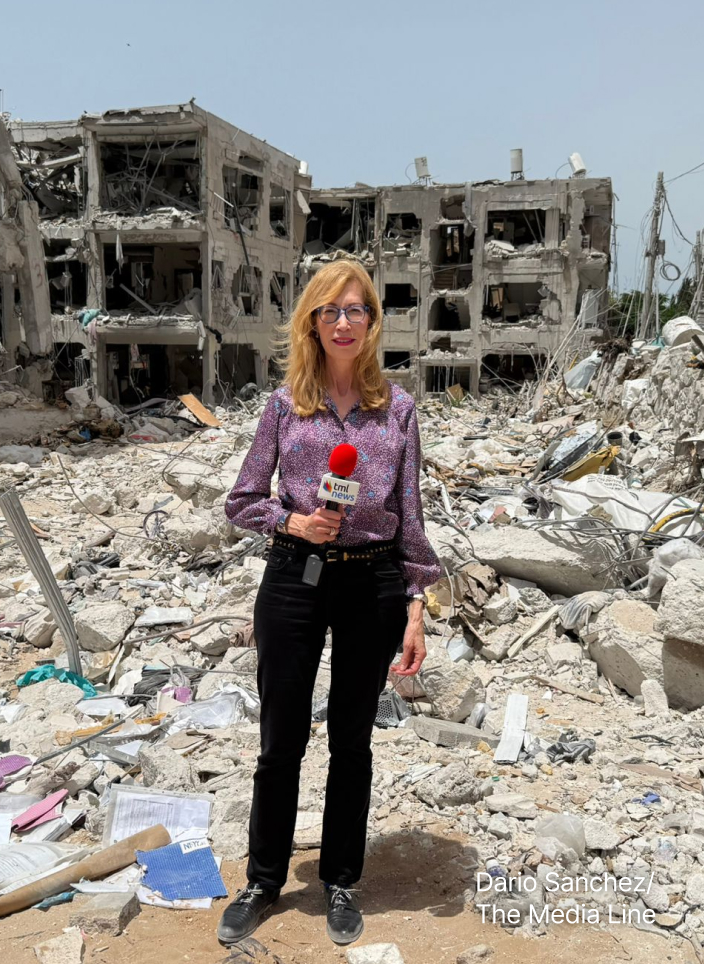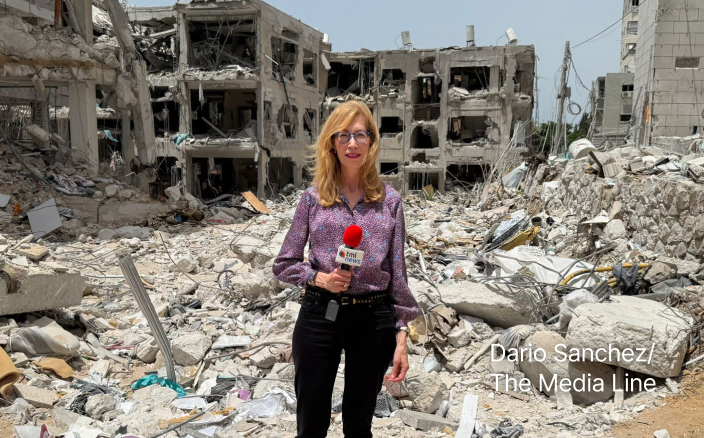Hamas Demands Total Prisoner Release, Leaving Israel in a Catch-22
Israel faces impossible dilemma when deciding on the fate of its citizens in Hamas captivity
Tomer Shpirer was riding his bicycle along Israel’s border with Gaza on a quiet Saturday morning. His mother, at home in a nearby kibbutz, called him urging him to come home as she realized something was going on. Rockets from Gaza were being fired.
“He answered the phone; he said he would come home immediately,” said his uncle, Simon Cifuentes. “And then the phone must have dropped and his mom heard curses and Arabic; it sounded like he was trying to run away.”
No one has spoken to us, we are helpless, we know nothing. Since yesterday we haven’t slept, we are like zombies.
Tomer’s whereabouts are unknown. His relatives have given DNA samples as they race between hospitals hoping he may be among the injured.
No one has spoken to us, we are helpless, we know nothing. Since yesterday we haven’t slept, we are like zombies.
“No one has spoken to us, we are helpless, we know nothing. Since yesterday we haven’t slept, we are like zombies,” Cifuentes told The Media Line.
The Shpirer family is not alone.
Dozens of Israelis are believed to be being held captive by Hamas terrorists in the Gaza Strip as part of a surprise offensive the organization launched on Israel over the weekend.
“There is still not a full understanding of the situation; we don’t know who has been kidnapped and who is dead, or missing,” said Dr. Eyal Pinko, from Bar-Ilan University’s Political Studies Department and an expert on military strategy and intelligence. “This is very natural in such a chaotic situation.”
Under a massive barrage of hundreds of rockets on early Saturday, Hamas fighters infiltrated communities adjacent to the Gaza border, taking advantage of the surprise to rampage through those Israeli communities.
Hauling captives back into the coastal enclave, including women, children, and elderly people proved that Hamas had success in capturing many hostages. This makes the current conflict between Israel and Hamas unlike any other previous confrontation.
Footage on social media showed Israeli civilians and soldiers, blindfolded, some partially clothed, being paraded through the streets of Gaza. Video of an elderly woman in a wheelchair with a terrorist standing next to her, symbolizing victory with his upraised hand, stunned Israelis.
Give the gift of hope
We practice what we preach:
accurate, fearless journalism. But we can't do it alone.
- On the ground in Gaza, Syria, Israel, Egypt, Pakistan, and more
- Our program trained more than 100 journalists
- Calling out fake news and reporting real facts
- On the ground in Gaza, Syria, Israel, Egypt, Pakistan, and more
- Our program trained more than 100 journalists
- Calling out fake news and reporting real facts
Join us.
Support The Media Line. Save democracy.


Israel now faces a major dilemma. Israeli officials have not released the number of people abducted, but it is clear the number is unprecedented and such a scenario was never taken into consideration by the defense echelon.
Hamas is demanding the release of all Palestinian prisoners held by Israel, a demand that is not new but now poses a major predicament for the current Israeli leadership, which is facing mounting public pressure to bring its citizens home.
“Israel has no choice but to release all the prisoners,” Pinko told The Media Line. “This is a strategic problem of a totally different magnitude and publicly there is no other alternative the government has, not even a partial prisoner swap which would see only civilians released.”
According to B’Tselem, an Israeli human rights watchdog, there are almost 4,500 Palestinian prisoners currently being held in Israeli jails. Throughout its history, Israel has carried out many prisoner swaps at high prices.
For the Palestinians, the release of prisoners is one of the highest goals of their ongoing struggle against Israel. For Israel, the release of captives is a sensitive subject.
Speaking hours after the violence began, Israeli Prime Minister Benjamin Netanyahu warned Hamas of dire consequences.
“I say to Hamas: You are responsible for their well-being. Israel will settle accounts with anyone who harms even a single hair on their heads.”
But Netanyahu’s threats may be empty ones. His government now has to decide whether to strike at Hamas, with the risk of it executing all the hostages in response, or negotiate with the terrorist organization in an attempt to release those hostages.
“There will be no negotiations any time soon,” said Gershon Baskin, who operated a secret and direct negotiating channel with Hamas for the release of Israeli soldier Gilad Shalit in 2011. “The hostages are probably already at unknown locations underground, being divided up. Hamas’ opening demand of releasing all the prisoners is not in any way an opening point for negotiations and Israel has no interest in giving Hamas any concessions at this point in time.”
“The best scenario is that Hamas is gracious enough, which they are not known to be, to release women children and elderly voluntarily,” Baskin told The Media Line. His assumption is that international pressure on Hamas is now heavy to make such a move—but with Hamas highly unlikely to cave.
On Sunday, several angry relatives gathered in front of the military headquarters in Tel Aviv demanding action and seeking information of their loved ones. Many relatives gave interviews on various news outlets, begging for military action to bring back the captured citizens. Testimonies of relatives who have seen several of their relatives on social media being held by Hamas keep emerging as the hours go by.
“How come they [the government] aren’t turning the world upside down to bring back our people?” one relative screamed on television, as he scoured a local hospital, in the hopes his niece was not taken captive in Gaza.
“Israel is in a horrible Catch-22,” said Ronni Shaked, coordinator of the Middle East Unit at the Harry S. Truman Research Institute at Hebrew University in Jerusalem. “The government needs to decide whether to launch a massive retaliatory operation against Hamas, not taking into consideration the hostages, or not launch a large operation in order to secure a prisoner deal.”
“The only viable solution right now is an Israeli military operation aimed at releasing the hostages using a fine-tooth comb, probably ending up with a significant number of hostages being killed,” said Baskin.
For years since Hamas took over the Gaza Strip in 2007, Israel has struggled with its deterrence when facing the terrorist entity. Officially, it does not have any contact with the organization that denies Israel’s right to existence, but, in backchannels, Israel and Hamas coexist, often through Egyptian mediation. Israel has allowed for significant funding to enter the Gaza Strip, many of it used to strengthen Hamas military capabilities that have then turned against the Jewish state.
Often criticized for his policy which allowed an emboldened Hamas, Netanyahu is now forced to balance between rehabilitating Israel’s deterrence and withstanding public pressure to bring its citizens home.
“This is a lose-lose situation, an impossible equation,” said Pinko.
The current crisis comes over a decade after a major prisoner swap in 2011, in which Israel released over 1,000 Palestinian prisoners in exchange for one captive Israeli soldier; the debate surrounding that deal still has Israelis divided on whether the price paid for the release of Gilad Schalit was too high.
Hamas has been jubilant as it has realized the extent of its success.
“Hamas will not be willing to compromise,” Shaked told The Media Line. “Therefore, Israel now has to see the results of the military operation against Hamas and that will determine its position on any possible negotiation.”
When Shalit was returned to Israel, some 1,027 Palestinian prisoners were set free, amid sharp criticism in Israel and a turn in public opinion that had previously pushed for the deal. Among the freed prisoners were killers sentenced to life in prison and masterminds of attacks against Israelis. Yahya Sinwar, the current leader of Hamas in Gaza, was one of the prisoners released in the exchange, after his four life sentences were cut short by the deal. Family members of terror victims were highly critical of the deal but their attempts to stop it by petitioning the Supreme Court failed.
As much as Israelis were excited to see Shalit back home, Netanyahu, who was also at the helm then, took the heat for an agreement many deemed unfair and dangerous.
Hamas is also believed to be holding the bodies of two Israeli soldiers killed in a military operation in 2014. In addition, two civilians, Avera Mengistu and Hisham al-Sayed, are believed to be held in the Gaza Strip after straying there. Both Mengistu and al-Sayed suffer mental health conditions and are not involved in the current hostilities between Israel and Hamas. Indirect negotiations have reportedly been going on for years through Egyptian mediation. There have been reports that a deal was close to being sealed, perhaps because Netanyahu was not willing to pay the high price Hamas demanded for two bodies and two civilians.
As of this weekend, this price has skyrocketed, putting Israel in an unprecedented conundrum that will not be easily solved in the immediate future.

